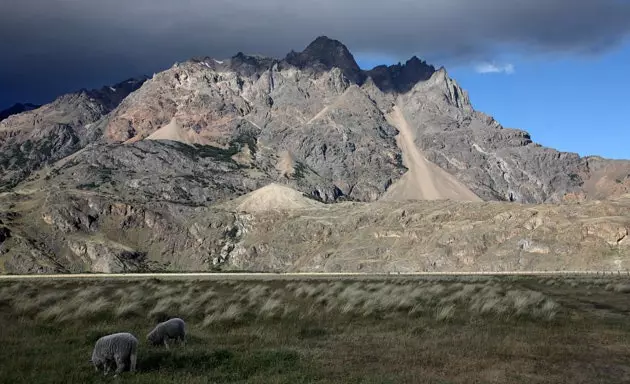
Pumalín is the largest nature reserve in private hands on the entire planet
The drone of a small plane flying low over the clear and serene bay breaks the silence of the jungle. Suddenly, I see a miniature white Cessna next to the massive cliff face. The long silver thread of a waterfall is the only thing that breaks the dense green thickness of the precipice. My guide, Dagoberto Guzmán, looks up at the plane and limits himself to saying: — Kris. Moments later, another Cessna arrives along the same flight path. Guzman looks up. —Doug.
Bouncing, the two planes skid down the grassy runway still dotted with raindrops. Shortly after, Doug Tompkins and his wife, Kristine McDivitt Tompkins They receive me in her humble abode, the size of the Californian Yosemite reserve –something like half of Ibiza–: nothing less than the Pumalin Park in Chile, the largest nature reserve in private hands on the planet.
Situated roughly in the second third of Chile's indented coastline, Pumalín is an isolated Eden of jagged, snow-capped peaks and long fjords like those in Norway. The dense vegetation gives it an air of Jurassic Park. I have arrived at the end of February, when the Chilean summer is in full swing, and I see penguins, dolphins, sea lions and seals frolicking in Caleta Gonzalo, the sparkling bay that also serves as the main entrance to the park.
Tompkins and McDivitt Tompkins they are the engine of this environmental conservation adventure that may be the most important in history without the help of a State. This couple who used to be part of the Californian bohemia keeps buying parcels the size of national parks in the jungles of South America with a view to their permanent protection : they describe it as 'pay the rent' for living on the planet.
The two together have created nine extensive nature reserves -his and hers- throughout the rough expanses of land of Chile and Argentina . Pumalín, open free to the public throughout the year, is the jewel in the crown.
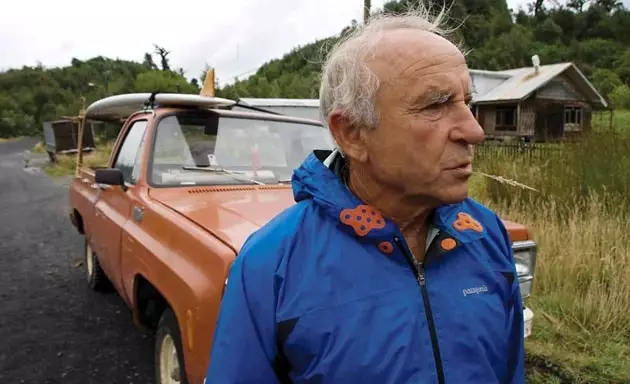
Doug Tompkins, ecocentrist
Doug Tompkins, who made his fortune selling climbing clothing and equipment, is the founder of the ** Conservation Land Trust ** – which has already contributed to putting a national park with all its services in the hands of the Chilean State – and in the future he hopes be able to entrust the Chileans with Pumalín as well. His wife, formerly CEO of the clothing company Patagonia, today directs Patagonian Conservation (CP).
In 2004, McDivitt Tompkins handed over the Monte León National Park to Argentina , rich in natural species, on the Argentine coast, and is currently working on the restoration of a second Argentine park that will be even larger. And CP is preparing the gigantic Patagonia National Park , which will open its doors next year (McDivitt Tompkins's foundation concentrates her activity exclusively in Patagonia, while her husband's Conservation Land Trust works mainly further north in the country).
“From a moral and ethical point of view it is unthinkable not to work to reverse the crisis of species extinction says Tompkins, explaining what motivates him in his conservation work. As he sees it, there is only one way to change the planet: “We must move from an anthropocentric world to an ecocentric one. . All species, from the beetle to the Siberian tiger, have their own right to exist. At heart, ours is a religious perspective,” he states, likening the reserves he and Kristine are creating to terrestrial Noah's arks. “We reintroduced the giant anteater in our Esteros del Iberá reserve,” adds McDivitt Tompkins with pride, alluding to one of his naturalist projects in the Argentine Pampas. "It is the first reintroduction of a species in the history of Argentina."
As striking as this couple is, they are just two more in the long tradition of so-called checkbook preservationists: Americans who for a century or so have decided to draw a line around their property and give up benefits to protect them –often at considerable personal and financial cost.
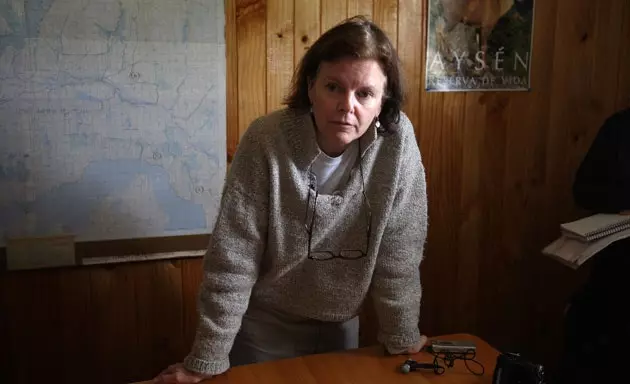
Kris Tompkins directs Patagonian Conservation
Today, this trend is growing thanks to a small but powerful group of wealthy activists like Tompkins and his wife. Among them are the founder of the natural personal care and cosmetic company Burt's Bees, Roxanne Quimby – who donated 28,327 hectares in the state of Maine to promote the creation of the Maine Woods National Park – and the discreet David Gelbaum , director of a venture fund company turned philanthropist – who has donated some 250 million dollars (191 million euros) to preserve virgin land, through the purchase, for example, of more than 200,000 hectares of the California desert that later relented in what was perhaps the largest transfer of private to public land in US history.
But Tompkins and his wife form a unique group: single-handedly, they have doubled the area of parks in Patagonia, buying 283,280 hectares in Argentina and 566,560 hectares in Chile and promoting the protection of tens of thousands more hectares. "What Doug and Kris are doing in South America is nothing new," says Tom Butler, whose lavish book Wildlands Philanthropy was published in 2008 by the Tompkins-created Foundation for Deep Ecology. . But the scale at which they are doing it is absolutely out of the norm. There is nothing like it in terms of extension.
The couple not only pays most of the expenses , but is also negotiating complex agreements with the States and working shoulder to shoulder with the employees, which sets them apart from donors who simply write checks to organizations like the Nature Conservancy.
The interest of Doug Tompkins by nature it manifested itself very early. Born into a privileged New York family in 1944, he was practically a misfit at his private school. When leaving school, he found his home in nature and he became a top skier and expert kayaker, as well as an avid mountaineer who founded a mountain guide service.
In 1964, he founded the sport climbing equipment company northface , in front of the legendary City Lights bookstore in San Francisco . In the 1970s, after getting rid of North Face, he founded the clothing company Esprit with his first wife, Susie. At first, they carried the clothes in their van and sold it by opening the tailgate. However, already in the 1980s, even while he was becoming a millionaire, the capitalist Tompkins was an anti-capitalist who attacked the practice of turning land into money.
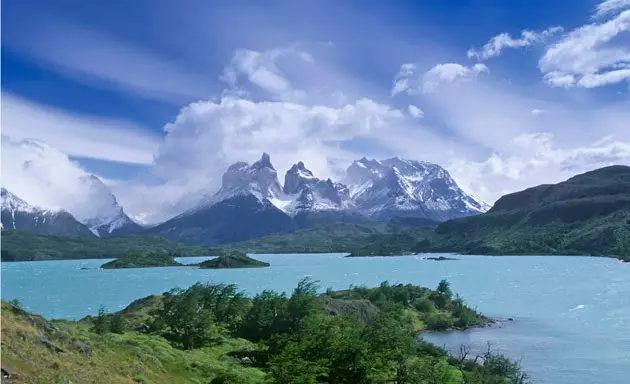
Next year the gigantic Patagonia National Park will open its doors
Currently, he claims, he is buying land and clearing it, in part to redeem himself for having sold people things that no one needed . Disgusted by the corporate world, he sold his share of the company in 1989, reportedly for $150 million, and broke camp for South America, where he now lives year-round.
My first morning in Pumalín, the cloud of blue smoke from the chimney of the visitor center flies over the little town that bears the name of the bay, and a light mist hangs in the air. Own Tompkins is responsible for the exquisite design of the buildings -Partly, he tells me, to show Chileans what a park can be like. Park visitors can rent one of six charming hobbit style huts that overlook the bay, all covered with cedar boards, a hallmark of indigenous construction.
When my guide, Guzmán (then the park supervisor), picks me up in an Isuzu Trooper to start the tour, it has finally cleared after the incessant rain of the night –the park receives more than 7,620 millimeters a year– and clouds low and frayed they threaten to catch on the towering branches of the trees. We cross the park, a two-hour drive on a paved road with the black rock crushed by past lava flows. Clear streams slither through the foliage, and in the distance looms the snow-capped Chaitén volcano, which erupted in 2008, sweeping away much of the town that bears its name, on the outskirts of the park.
Little by little, the Chilean State has begun to rebuild the town, and in the park the restoration tasks have also been exhaustive. We were barreling past the dense clumps of bamboo and huge sword-shaped ferns that threaten to eat up the road, when Guzman stopped the car and suggested we take a walk. Putting on our raincoats in case there was a downpour, we walked along a rough path of planks to a grove of trees that made us look like dwarfs.
These giant alerces, the Andean sequoias that form the heart of the park, were what sparked Tompkins' love for the region. In 1987 Rick Klein , head of conservation group Ancient Forest International, based in the US, thought the larch had followed the same path as the extinct dodo bird. Like so many other countries, Chile had razed its forests of ancient trees between the end of the 19th century and the beginning of the 20th. , felling larches, oaks and other valuable species. "People thought it was extinct," says Klein. But he heard of an area where trees were said to abound.
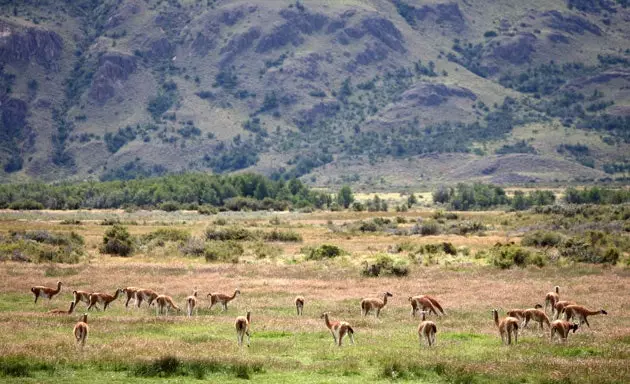
Panoramic view of Pumalin, Chile
After walking for several days crossing miles and miles of almost impenetrable jungle, he came to a blind valley, the footprint of an ancient glacier. "It was amazing," he tells me. “There were hundreds of larch trees, I couldn't believe it. It made you wonder if a human being had ever set foot there. We were treading on hallowed ground." Klein wrote a letter to Tompkins and conservationist Yvon Chouinard, founder of the clothing and equipment company Patagonia, asking for their help in buying 4,856 hectares. Tomkins, that he was in Chile for the first time in 1961 and fell in love with the country instantly, he came here with photographer Galen Rowell to see the larches with his own eyes. The next time he saw Klein, he told him that he had bought the land. The entire 4,856 hectares? Klein asked him. No, Tompkins answered: about 283,280 hectares . And those are the trees that now surround me.
The main theme in Pumalín, as in its other reserves, is biodiversity, a goal that Tompkins and McDivitt Tompkins have taken very seriously . With the help of Chouinard and other fellow travelers, they created the 80,937-hectare Patagonia National Park, which will grow to 263,000 hectares when tens of thousands more hectares of federal government land are added.
To a large extent, the park was created to protect the huemul –the deer that appears on the national coat of arms of Chile–, whose number of specimens is estimated to be less than 1,000. In their 141,640-hectare Esteros del Iberá reserve – a colossal network of lakes, swamps and wetlands very rich in species – they are reintroducing not just giant anteaters , but also swamp deer, giant river otters (or river otters) and, finally, jaguars.
His intention is that within 15 or 20 years the Esteros del Iberá will be the largest national park in Argentina. They hope that its ornithological richness will attract bird watchers, and they have built an ecological refuge where tourists can stay. Money can buy land, no doubt, but not necessarily good will.
Chaitén, the town that is the gateway to Pumalín, was once a hotbed of opposition to the environmental empire of Tompkins and McDivitt Tompkins. Emotions have cooled considerably, largely thanks to the couple's efforts to generate a green economy in this remote part of the world . In total, they have created more than 200 jobs in and around its parks, where locals are restoring the land, working on the farm owned by the couple and weaving garments to sell to tourists.
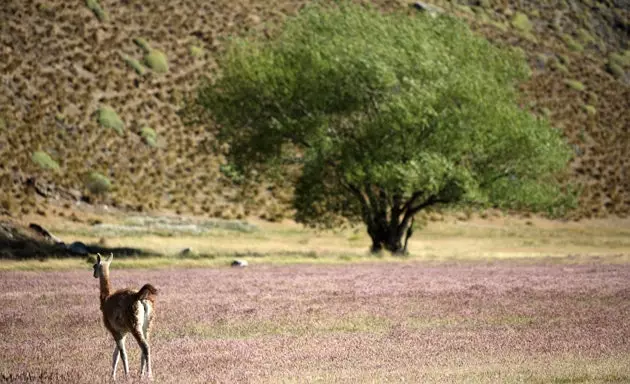
Doug Tompkins: This project is like "paying rent" for living on the planet
All of this is part of the kind of culture of parks and nature preservation that Tompkins is trying to create in Chile. “ It takes a long time to convince Chileans of the importance and significance of parks ”, He tells me. “But 50,000 visitors have already passed through Pumalín, some of them very influential.” Even so, the fact that the lands owned by the Tompkins occupy the entire narrow strip of Chilean territory, from the Pacific coast to the border with neighboring Argentina, has raised constant nationalist suspicion.
He has received numerous death threats, but claims that l he nationalist fuss is out of place. "We are not 'foreigning' the land, we are nationalizing it," he says. Not everyone sees it that way or appreciates Tompkins's radical stance on conserving the environment and reserves in his original state. “He is stubborn and unyielding. It does not deviate a millimeter from his ideology, ”says Chilean senator Antonio Horvath, a friend of Tompkins and one of the most serene and lucid minds. According to Klein, the Chilean elite sees Tompkins as a 'turncoat' . In fact, the ruling class has always been among its most ardent enemies.
South America has a long tradition of concentrating most of the wealth in the hands of a few who they don't value philanthropy very much . So, what to think of a gringo who selflessly gives people everything he has to open parks? But things have changed a bit among members of the ruling class: the example of **Tompkins convinced President Sebastián Piñera to create Parque Tantauco**, a private reserve of almost 121,400 hectares open to the public for camping and hiking in the island of Chiloé, off the Chilean coast, where tourists can see whales, foxes and other beautiful specimens of wildlife.
Pumalín Park is a blueprint created by Tompkins for the green utopia of the post-oil era –virgin nature around a human life developed on farms where animal energy is used, organic meat and vegetables are eaten and the land and water are cared for–. This 'eco-localism', as Tompkins calls it, is what will survive the collapse of the species that many announce – crash accelerated by a crazed economy that relies on farmed salmon from Chile to Japan.
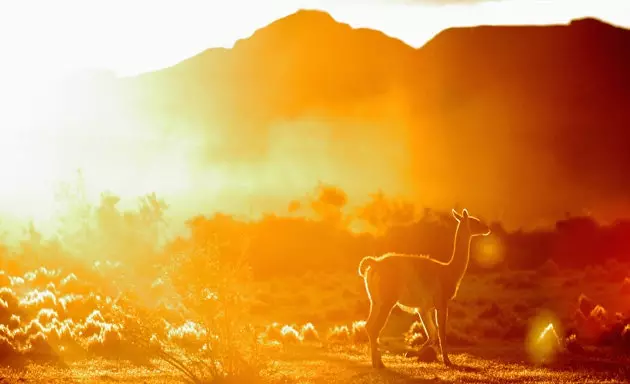
Wild Guanacos grazing in Chilean Patagonia
They have accused him of hypocrisy because of his wealth, his expensive fleet of planes, his tractors, and even his use of household tools such as the DVD projector and the computer that he has on his living room table. the. But he argues that the use of all this constitutes a 'strategic inclusion' . “One day I will stop needing them”, he tells me, waving his hand in a farewell gesture, as if it were a matter of time.
Tompkins has been brutally frank with Chilean businessmen in his attack on the salmon farms (according to him, "pig farms") that pollute the sea by the concentration of waste. Projects for massive dams that will plug half of the region's glacial rivers to generate electricity and further growth are the subject of one of the books in which Tompkins publicizes his environmental campaigns. “ We are controversial because we are activists – He explains to me. If you have activist material, all you have to do is act. We have a lot of land, thousands of hectares. We like large areas. And as any conservation biologist will tell you, they will never be big enough."
Creating a national park is very expensive and complex, and Tompkins affirms that, for now, he is going to stop buying large extensions and, from now on, dedicate himself to taking care of what he has. Park visitors are crucial to the pair's conservation strategy. Creating a green economy with guides, ecotourism and restoration, they hope to show Chileans, Argentines, and the entire world, that preservation can be synonymous with a sustainable and secure economic future. But despite the efforts of Tompkins and others, avoid the collapse of biodiversity it's going to cost more than just huge financial resources.
"Conserving land by buying it will always be important, but it can't be all-encompassing," says Nature Conservancy chief scientist M.A. Sanjayan, who has worked on creating parks and nature reserves around the world. “For starters, it's very expensive. We need to find a way to conserve the land in which human activity predominates: that is the way. If not, these nature reserves end up becoming islands”.
Doug Tompkins admits that it is the challenge of the 21st century and postulates that we can and must find a way of living that does not involve the destruction of the earth and its aquifers, the death of species or turning our planet into what he calls the “ coffin space. “Changing our way of living is not fighting progress –he assures–, but building it”.
This article is published in number 51 from Condé Nast Traveler magazine.
